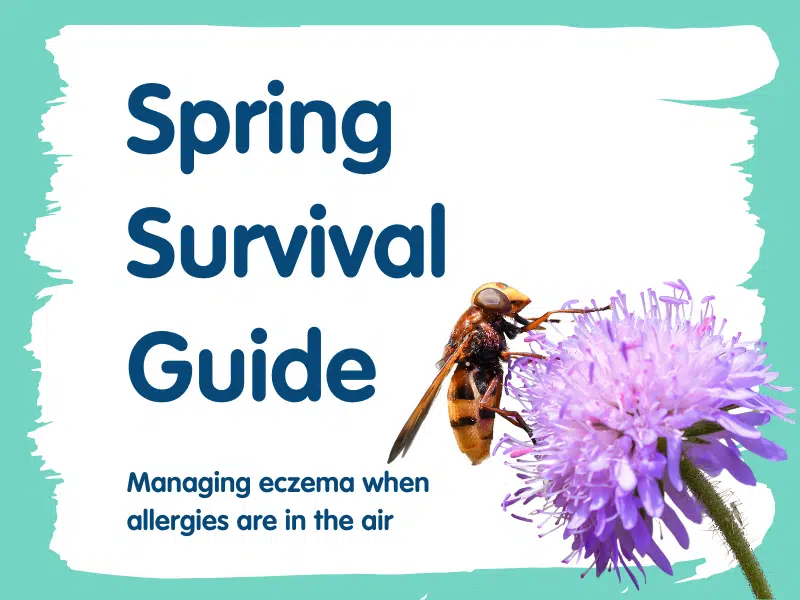
As the seasons change and nature wakes up, many people with eczema notice their skin becoming more reactive. Spring is a beautiful time of year, but for those with eczema, it can also bring new challenges. From increased pollen levels to sudden weather shifts and more time spent outdoors, springtime can be full of unexpected eczema triggers.
Why Can Spring Trigger Eczema?
- Tree and grass pollen can lead to skin inflammation.
- Sudden temperature changes may cause skin to become dry, tight, and itchy.
- Outdoor allergens mixed with sweat can irritate sensitive skin.
Know Your Triggers
Everyone’s eczema is unique, and so are their triggers. In spring, common flare-up culprits include:
- Pollen from trees and grasses
- Pet dander that clings to clothes and hair
- Sweat, especially when active outdoors
- Fragranced or unfamiliar sunscreens
- New laundry detergents with harsh ingredients
Tip: Keep a flare-up diary to help identify personal triggers and patterns.
Skincare Shifts for Spring
If your skincare routine works all year round, that’s fantastic. But if spring brings changes to your skin, consider these adjustments:
- Switch to a lighter emollient if heavier creams feel too greasy
- Always apply emollient before going outdoors
- From April to October, apply sunscreen daily
- Gently cleanse skin after outdoor exposure to remove pollen
Tip: Patch test new products, spring skin can be extra reactive!
Smart Outdoor Habits
Enjoying the outdoors is important. Here’s how to protect your skin:
Do:
- Apply emollient before heading out
- Wear a wide-brimmed hat and sunglasses
- Shower and change clothes after outdoor activity
- Use fragrance-free mineral sunscreens with zinc oxide or titanium dioxide
Don’t:
- Hang laundry outside, pollen can stick to fabric
- Sit directly on grass
- Apply sunscreen without emollient underneath
- Wear scratchy fabrics like wool
- Exercise outdoors during peak midday heat
Allergy Relief Can Help Eczema Too
Spring allergens may worsen eczema, but treating hay fever can also help your skin. Allergic inflammation affects the skin barrier and immune response.
Relief options include:
- Non-drowsy antihistamines
- Nasal sprays and eye drops
- Protective barrier balms for nose and eyes
Always speak to a GP or pharmacist before starting any new treatment.
Tip: Reducing hay fever symptoms can help calm the itch-scratch cycle.
When to Seek Help
Some spring flares need medical attention. Don’t hesitate to speak to your GP if:
- Your skin is cracked, weepy, or infected
- You need stronger treatments like prescription topicals or antihistamines
- Your eczema is severe and may benefit from dermatologist care
With the right strategies, you can enjoy spring while keeping your skin protected, comfortable, and in control.
Spring doesn’t have to mean flare-ups and frustration. By understanding your personal triggers, adjusting your skincare routine, and taking simple steps to reduce exposure to allergens, you can enjoy the season with greater confidence. Whether you’re heading outdoors or refreshing your products for warmer weather, small changes can make a big difference. And remember, help is always available. If your eczema becomes harder to manage, reach out to your GP or dermatologist for support.
